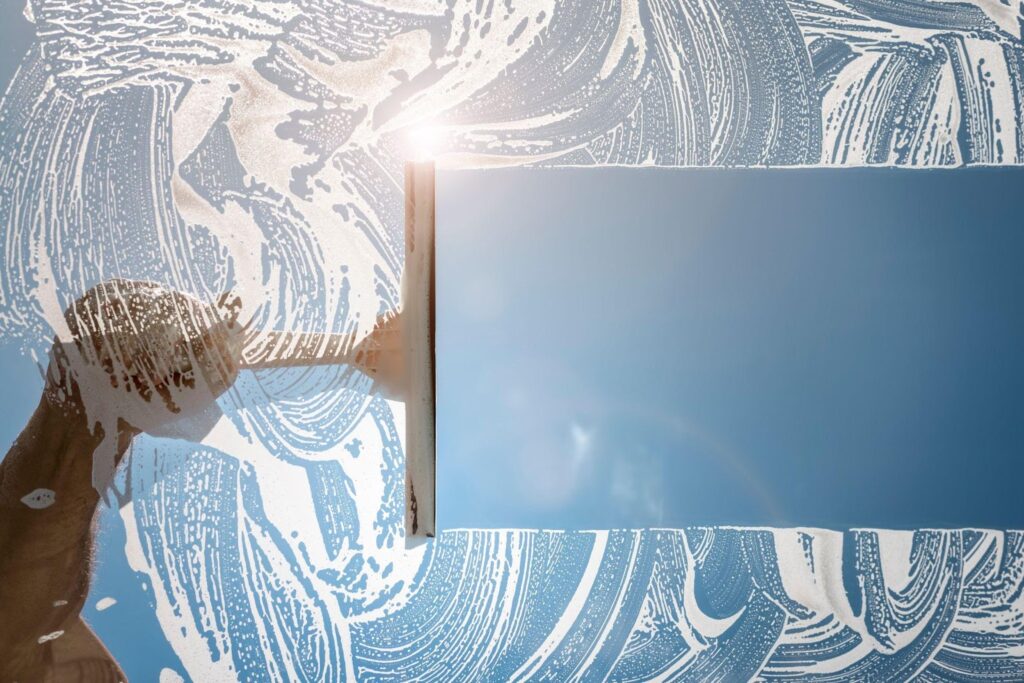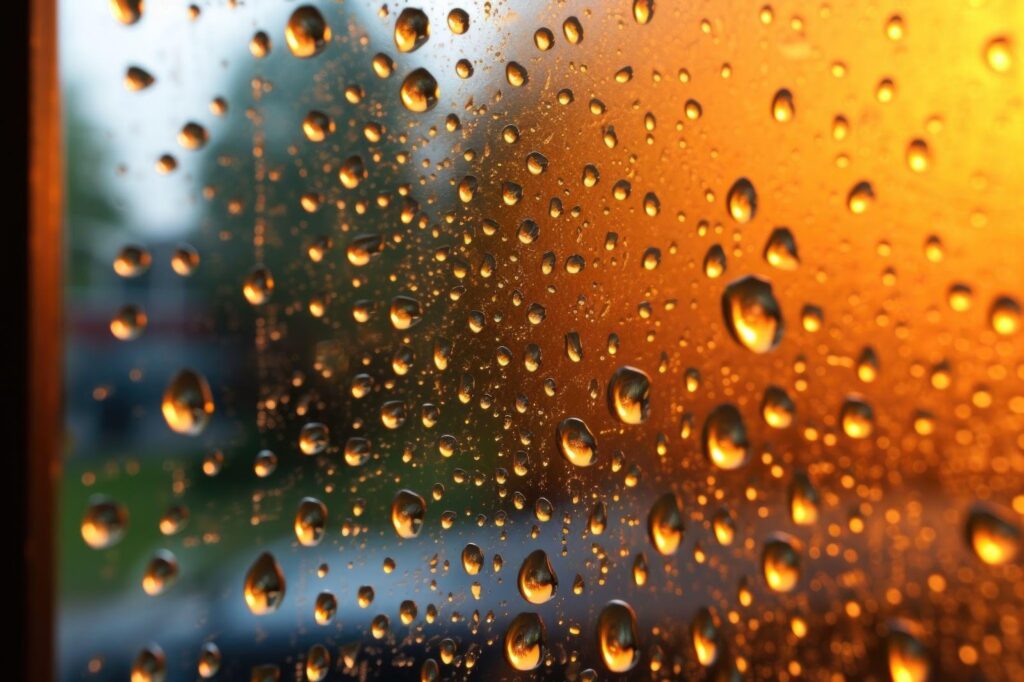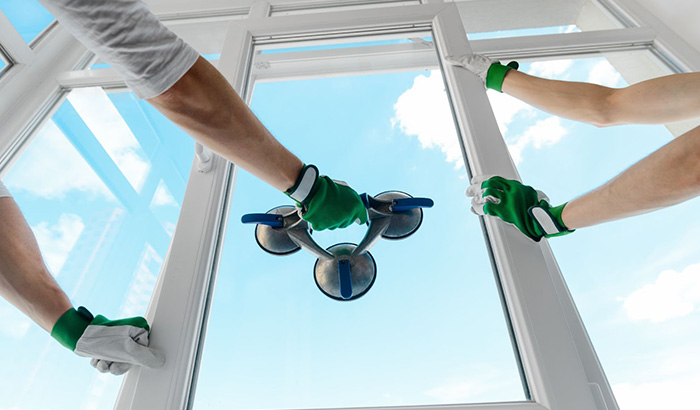Maintaining the pristine condition of your glass installations is key to preserving their beauty and functionality. From sparkling windows to elegant glass decor, each piece needs proper care.
In this blog, we’ll share essential tips for effective glass maintenance, helping you keep your installations gleaming. Whether it’s cleaning techniques or damage prevention, we’ve got you covered. Let’s dive into the world of glass care, where clarity and upkeep go hand in hand.
1. Regular cleaning
Regular cleaning is essential for maintaining the beauty and longevity of your glass installations. Whether you have glass windows, doors, or decorative pieces, keeping them clean will enhance their appearance and prevent damage and deterioration over time.
First, gather all the necessary supplies before cleaning your glass installations. You will need a bucket of warm water, a mild detergent or glass cleaner, a soft sponge or microfiber cloth, a squeegee, and some lint-free towels or paper towels. These supplies will ensure you have everything you need to clean your glass surfaces effectively.
Start by removing any loose dirt or dust from the glass using a dry cloth or your hand. This will prevent scratching when you start scrubbing. Next, prepare a mixture of warm water and a small amount of detergent or glass cleaner in the bucket. Be sure to follow the instructions on the cleaner bottle to ensure you are using the correct dilution.
Dip a soft sponge or cloth into the soapy water and gently scrub the entire glass surface in circular motions. Pay special attention to any areas with stains or smudges.
Once you have thoroughly scrubbed the glass, it is time to remove the soapy residue. Take the squeegee and slowly pull it across the glass in a straight line, starting from the top and working your way down. This will remove excess water and prevent streaks from forming.
Be sure to wipe the squeegee after each pass to prevent dirt or debris from being redistributed onto the glass. Repeat this process until all the soapy water has been removed.
Now that the glass is mostly dry, use a lint-free towel or paper towel to gently wipe the surface and remove any remaining moisture. Wipe in a consistent, downward motion to avoid leaving streaks. Take extra care with any decorative elements on the glass, such as etchings or intricate designs, as they may be more delicate and require a lighter touch.

2. Proper handling and usage
Proper handling and usage are essential to ensure glass’s longevity and prevent any accidents or damage. Whether it’s a window, mirror, or glass tabletop, following these tips will help you maintain your glass installations for years to come.
1. Handle with care
When handling glass, always use both hands and grip it firmly but gently. Avoid putting pressure on the edges or corners, which often causes cracks or chips. If the glass is large or heavy, ask for assistance to prevent accidents.
2. Protect from scratches
To avoid scratches, never place sharp or abrasive objects directly on the glass surface. Use coasters or placemats under glasses, plates, or any items that could potentially scratch the glass. When moving objects on a glass tabletop, lift them instead of dragging them across the surface.
3. Avoid extreme temperature changes
Glass installations are susceptible to thermal stress. Avoid sudden temperature changes, such as placing a hot object directly on a cold glass surface or vice versa. This can cause the glass to crack or shatter. Use insulated pads or trivets to protect your glass from heat sources.
4. Check for cracks or chips
Regularly inspect your glass installations for any cracks or chips. If you notice any damage, no matter how small, address it immediately. Cracks will spread over time and compromise the structural integrity of the glass. Contact a professional glass repair service to assess and repair the damage.
5. Keep away from chemical substances
Avoid spraying or exposing your glass installations to chemicals like bleach or ammonia-based cleaners. These chemicals cause permanent damage or discoloration to the glass surface. Instead, opt for mild and non-abrasive cleaning solutions specifically made for glass.
3. Using protective coatings
When it comes to maintaining glass installations, the importance of protective coatings cannot be stressed enough. These coatings act as a shield, protecting your glass from various elements that cause damage and reduce its lifespan.
1. Understand the different types of coatings available
Before applying any protective coating to your glass installations, it is crucial to understand the different types available in the market. The two most common types are hydrophobic coatings and anti-reflective coatings.
Hydrophobic coatings repel water, making cleaning the glass easier and preventing water spots. Anti-reflective coatings reduce reflection and glare, improving visibility while protecting the glass from UV rays.
2. Clean the glass thoroughly before applying the coating
To ensure that the protective coating adheres properly to the glass, it is essential to clean it thoroughly beforehand. Remove any dust, dirt, or smudges using a gentle glass cleaner. Make sure the glass is completely dry before applying the coating to avoid any streaks or blemishes.
3. Follow the manufacturer’s instructions
When applying protective coatings to your glass installations, always follow the instructions provided by the manufacturer. Each coating may have specific application techniques and curing times. Do not skip any steps or rush through the process, as it can affect the effectiveness of the coating.
4. Apply the coating evenly
To ensure uniform protection, apply the coating evenly across the glass surface. Use a soft cloth or applicator recommended by the manufacturer to spread the coating in a thin layer. Avoid leaving any streaks or excess product on the glass. If necessary, apply multiple coats, allowing appropriate drying time between each coat.
5. Regularly inspect and reapply the coating
While protective coatings offer long-lasting protection, they may require reapplication over time. Regularly inspect your glass installations for any signs of wear or damage to the coating.
If you notice any areas where the coating has peeled or worn off, it is essential to reapply the protective coating promptly. This will ensure continuous protection against environmental factors and keep your glass installations in optimal condition.
4. Safe decorating practices
Decorating your home or office with beautiful glass installations adds a touch of elegance and sophistication. However, it’s important always to prioritize safety when handling and maintaining glass decor.
1. Protect your surfaces
To prevent scratches or damage to your furniture, consider placing a soft cloth or mat underneath your glass installations. This will provide a cushion and help distribute the weight evenly, reducing the risk of accidents.
2. Avoid excessive weight
While glass may appear sturdy, it has its limits. Avoid placing heavy objects on top of glass surfaces or overloading glass shelves. Excessive weight may cause the glass to crack or shatter, creating a potential safety hazard.
3. Childproof your glass
If you have children or young visitors, you’ll want to take extra precautions to ensure their safety around glass installations. As a responsible adult, consider childproofing your glass using safety film or applying decals to make it more visible. Additionally, avoid placing glass decor within reach of little hands.

5. Addressing condensation and moisture
Addressing condensation and moisture is an essential aspect of maintaining glass installations. This common issue leads to a host of problems, such as mold growth, damage to surrounding structures, and a decrease in the overall aesthetic appeal of your glass surfaces.
Fortunately, you can follow several simple yet effective tips to address condensation and moisture and keep your glass installations in top-notch condition.
1. Improve ventilation
Proper airflow helps prevent condensation. Ensure that your glass installations are well-ventilated by opening windows or using vents to allow fresh air to circulate. This helps to reduce excess moisture in the air and prevent condensation from forming on the glass.
2. Use dehumidifiers
Dehumidifiers are beneficial in areas with high humidity levels, such as bathrooms and kitchens. These devices help to extract excess moisture from the air, keeping the surroundings dry and reducing the chances of condensation on your glass surfaces.
3. Install weatherstripping
Weatherstripping is an effective way to seal gaps or cracks around your glass installations. By preventing drafts and air leaks, weatherstripping helps maintain a consistent temperature inside your home, reducing the likelihood of condensation forming.
4. Utilize anti-fogging products
Apply anti-fogging products, such as sprays or films, to your glass surfaces to prevent fogging and condensation. These products create a thin barrier that minimizes temperature differences and inhibits the formation of moisture droplets on the glass.
5. Wipe off excess moisture
Regularly wiping off any excess moisture on your glass surfaces helps prevent condensation buildup. Use a lint-free cloth or a squeegee to remove water droplets, especially in areas prone to moisture accumulation, like bathrooms and kitchens.
6. Maintain a consistent indoor temperature
Fluctuations in temperature also contribute to condensation formation, making it important to maintain a consistent indoor temperature. Avoid drastic temperature changes and use thermostats or air conditioning systems to regulate the temperature inside your home.
7. Monitor and control humidity levels
Keeping an eye on the humidity levels in your indoor spaces is important. Use a hygrometer to measure the humidity and ensure it stays between 30 to 50 percent, as recommended by experts. If the humidity levels are consistently high, consider using a portable or whole-house humidifier to maintain an optimal range.
Murray Glass
Ready to elevate your glass care game or thinking about adding new glass installations to your space?
Look no further than Murray Glass. With our expertise in all things glass, we’re here to ensure your installations remain in top-notch condition. Whether you need professional advice, glass maintenance services, or want to bring a new glass project to life, Murray Glass is your go-to destination.
Visit Murray Glass today, and let us help you achieve the clarity and elegance your space deserves.





